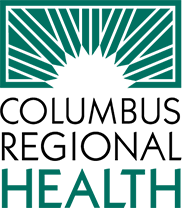VIDEO: Total Contact Casting at The Wound Center
In this video, Randy Lucas shares his experience with diabetic wound treatment at the Wound Center, and Dr. John Hladik explains the benefits of total contact casting.
Video Transcript
Randy Lucas: I've had this wound for quite some time and until I came here to The Wound Center, it just was not healing. By using this cast and keeping pressure off that wound, it heals a lot quicker.
Dr. John Hladik: Here at the Wound Center, a total contact cast is a specially-built cast that relieves the pressure from the bottom of a diabetic foot, which has a wound on it. What that cast does is it distributes the pressure evenly across the bottom of the foot, transmits it up the leg to relieve pressure on the ulcer so we can get healing.
Randy Lucas: To me, it feels like a regular cast. I've had a cast before. This feels like a normal cast to me, so I don't know the real difference.
Dr. John Hladik: We've seen patients that use total contact casts heal 50 to 60 percent quicker than without. One of the problems we face with diabetic ulcers on the bottom of feet is to keep people off their feet. This allows them to ambulate while they're healing.
Amanda Henderson: Well that spot that we did a HBO (hyperbaric oxygen therapy) for still looks really good. Just this new spot on the side.
Dr. John Hladik: Total contact casting can be used with anything. We do casting and put patients in the hyperbaric chamber all the time, there's no contraindication. It's just another tool in our toolbox to help them get better quicker, and the two together are pretty powerful.
Dr. John Hladik: That's awesome, much better. Okay, good. Alright, build away.
Dr. John Hladik: Randy is an extremely complicated guy. He is a Type 1 diabetic. He's had multiple foot problems, multiple ulcers. He has very little feeling, probably up to his knees in both feet. With his job, he's a maintenance guy at one of the larger factories locally. He's a very hard worker, he's up on his feet, he's in multiple different positions all day. It's very easy for him to rub a sore on his feet. And before he knows it, he's in some type of trouble. We've kept him going, we've kept him working. In his case, he's very challenging but we've been able to keep him working. His wound has decreased by 50 percent in only two weeks, which is pretty remarkable.
Randy Lucas: I've known Dr. Hladik for quite some time now, so we're almost like buddies. He's knowledgeable too, he knows what he's doing. And he's kept me on the job so that's my main goal.
Dr. John Hladik: If you or a family member has some type of a wound, whether it's an accident, injury, or from a medical condition that's not healing, you can call and see us. You don't have to be referred from your doctor and we'll, of course, make contact with your primary care doctor or whoever specialist you're seeing and let them know what's going on.

CRH News
-
CRH recognized for excellence in lactation care
Jun 24, 2024, 15:26 by DeClue, A.In addition, the facility demonstrated that it has recently completed activities that help protect, promote, and support breastfeeding.Full story -
Take the ColumBUS Transit Survey
Jun 20, 2024, 08:33 by Newton, A.ColumBUS Transit is conducting a Route Study to look for opportunities to improve the service. Your input will help guide priorities and inform decisions about the future of public transit in our community.Full story -
Orthopedics and Sports Medicine practice moves to NexusPark
Jun 19, 2024, 14:24 by DeClue, A.CRH Orthopedics and Sports Medicine will open at NexusPark on July 1.Full story -
Memorial Day Holiday Physician Office Hours
May 22, 2024, 11:49 by DeClue, A.In observance of the Memorial Day holiday, most Columbus Regional Health Physicians offices and outpatient clinics will be closed on Monday, May 27, 2024.Full story -
Guardian Response Trains with CRH on Patient Transport
Apr 26, 2024, 15:25 by DeClue, A.On April 29 and May 2, Columbus Regional Health and area first responders will be conducting a training session in partnership with military representatives. This is a planned, simulated emergency drill.Full story -
Final Two CRH Practices Move to NexusPark
Apr 18, 2024, 12:36 by DeClue, A.CRH at NexusPark officially opened in late January, and more than 15 provider practices and services have relocated to the space in the first quarter of 2024.Full story

